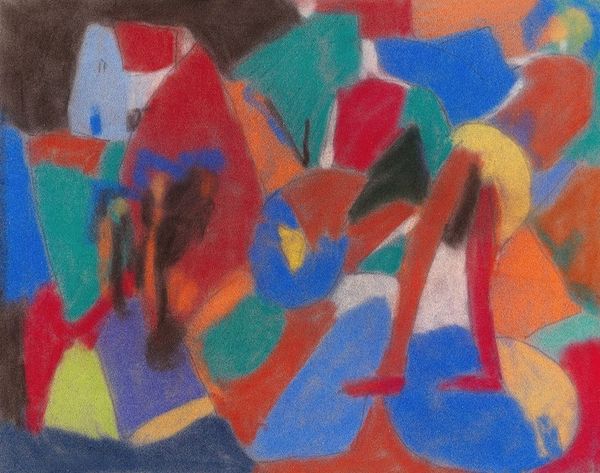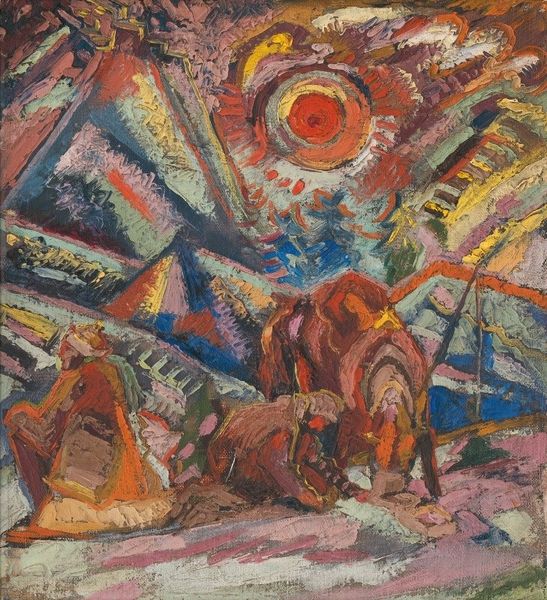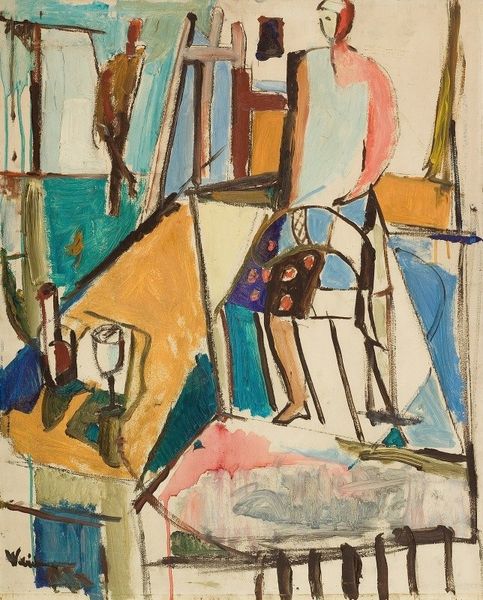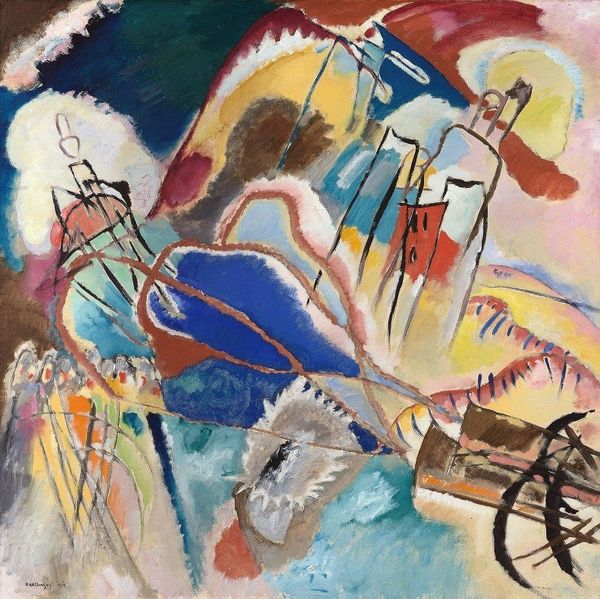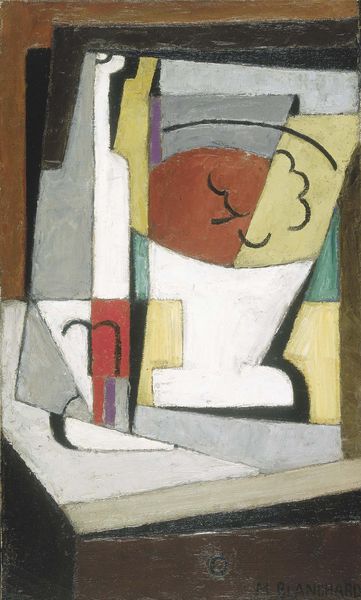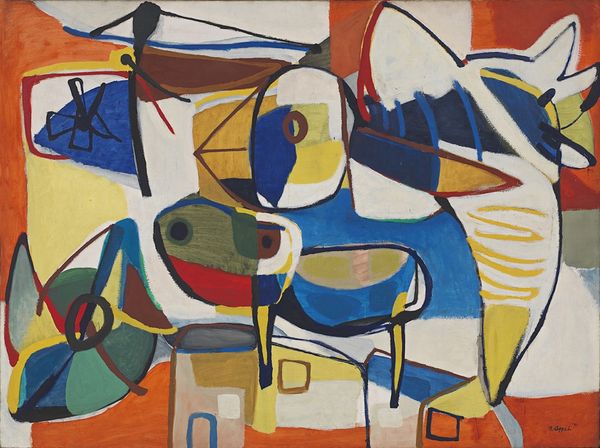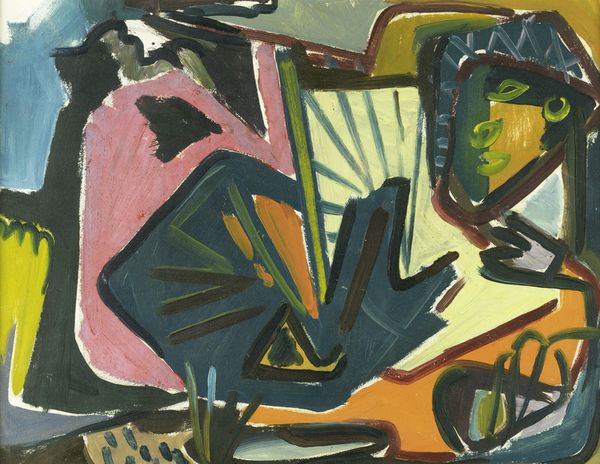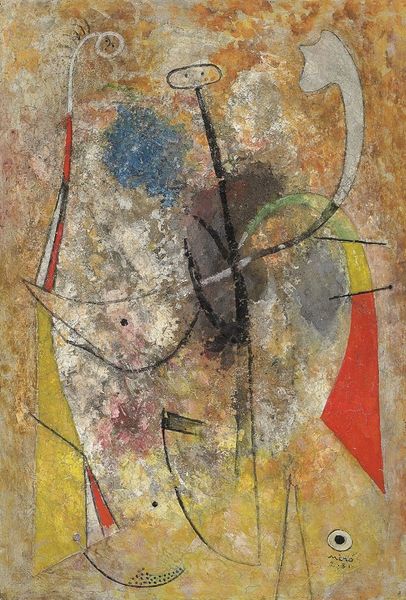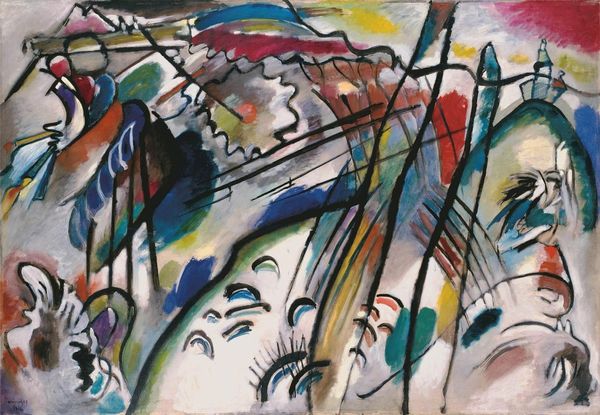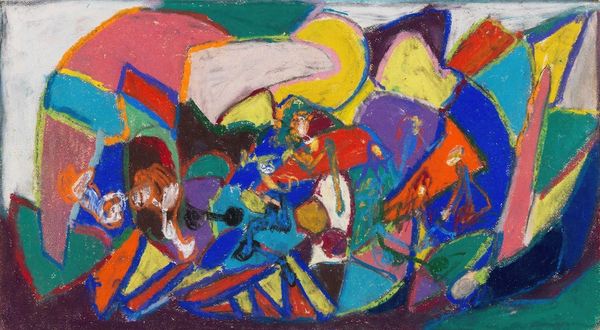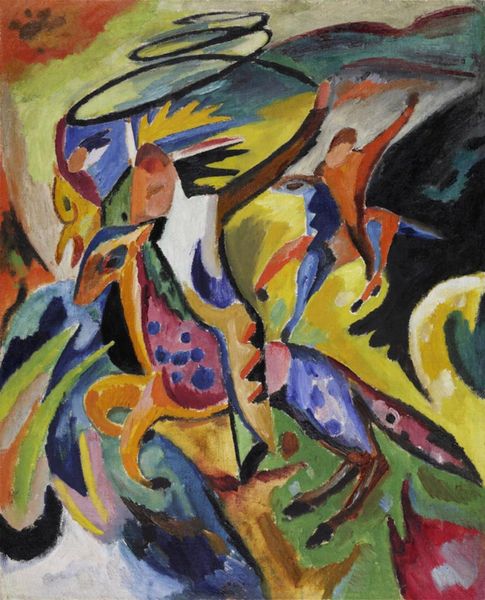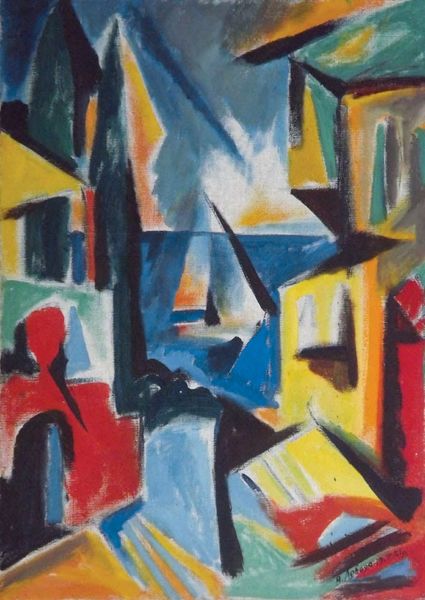
Copyright: Public Domain: Artvee
Curator: Here we have Wassily Kandinsky’s "St. George II," painted in 1911. It’s a striking example of his move towards abstraction while still engaging with historical themes. Editor: Immediately I see swirling colors and barely-there figures. It feels chaotic, like a story being told in emotional shorthand. Is it supposed to be uplifting? It gives me the opposite feeling, like a premonition of something collapsing. Curator: Kandinsky's choices are deliberate. He's dismantling traditional representation. We have to consider his use of line, form and color as the primary conveyors of meaning. He blends the myth of St. George with a burgeoning modern sensibility. Note how the "earth" is a mass of pinks and blues, and how that lance bisects the whole composition. Editor: True. I do find my eye is drawn along that diagonal—the lance acts like a conduit. And even the palette; these ochres and umbers provide a grounding force that the swaths of pink, blue and red wouldn't have otherwise. Curator: Exactly. Kandinsky was very invested in Theosophy, the occult, and this idea that material objects possess a spiritual essence. "St. George II," can be interpreted as an exploration of spiritual battle rather than a literal historical depiction. Editor: So the "dragon" here might be less literal reptile, and more an inner turmoil or even, looking at the date, a feeling of cultural upheaval. I wonder what he would make of today, if what unsettled him then is now just amplified by orders of magnitude. Curator: Kandinsky was deeply concerned with how art could evoke emotion, how abstraction could surpass mere representation to communicate a kind of higher truth. He certainly believed art should anticipate the future and lead culture. Editor: Well, he definitely created an artifact ripe for our times. There's something powerful about witnessing his search for meaning within that rising tide of… something indefinable, but potent.
Comments
No comments
Be the first to comment and join the conversation on the ultimate creative platform.
